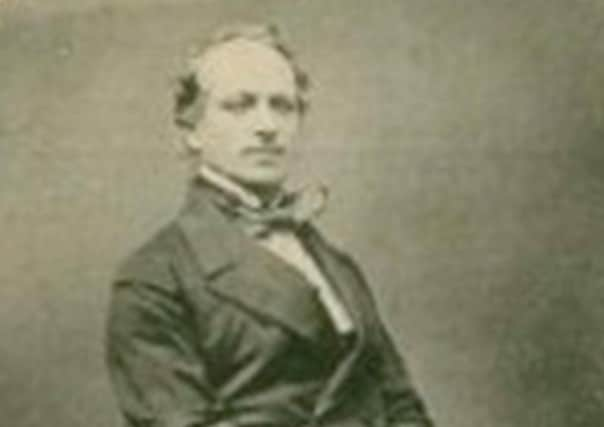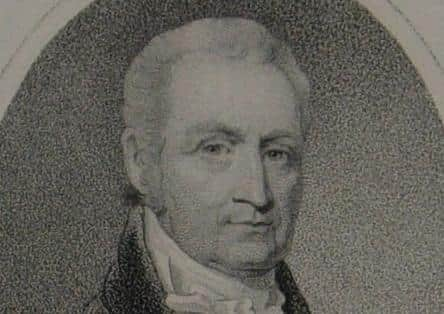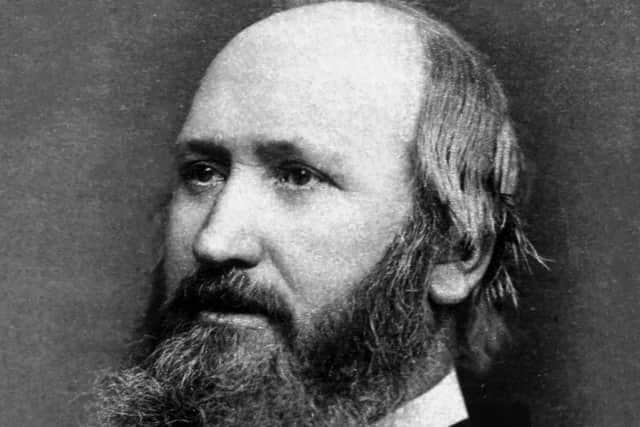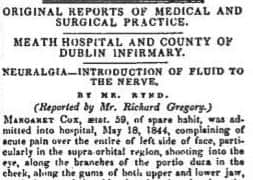First hypodermic needle invented by a fox-hunting Irish doctor


Dr Jenner inoculated a young lad called James Phipps with vaccinia virus (cowpox), thus demonstrating immunity to smallpox.
And it was Dr John Crawford, born in Northern Ireland in 1746, who first introduced an advanced smallpox inoculation in America while working in Baltimore.
Advertisement
Hide AdAdvertisement
Hide AdThose early inoculations were carried out (frighteningly!) with no slender, metal needles.


I return to the account of Dr Crawford again today because there was a reference in it to Francis Rynd - “the Irish inventor of the hypodermic needle.”
As you read this page, the roll-out of vaccinations here and around the UK has reached enormous proportions, with the figures rising fast and burgeoning rapidly in other countries too.
And all of this is all possible because of an Irish physician, Francis Rynd, born in Dublin in 1801.
Advertisement
Hide AdAdvertisement
Hide AdSome biographers focus on Rynd’s student days in Trinity College Dublin, where he was apparently regarded as ‘wayward’, preferring his hectic social life (including fox hunting) to his medical studies.


The Lancet, one of the world’s most authoritative medical journals, reveals the historic significance of Francis Rynd’s medical innovation which has made today’s massive vaccination programme possible.
According to the Lancet, Rynd “made subcutaneous injections” to a woman patient in 1844 for neuralgia (chronic pain), using a ‘syringe’, described as a “slender trocar and cannula” - a metal awl for cutting into the skin and a hollow tube.
“It was inserted subcutaneously,” the Lancet recounts, “and the trocar retracted by means of a spring. Narcotic liquid descended from the hollow handle into the puncture site as the instrument was withdrawn.”
Advertisement
Hide AdAdvertisement
Hide AdAt the time Francis Rynd was a surgeon in Dublin’s Meath Hospital (now incorporated into Tallaght Hospital), and was treating a woman who had suffered for years with severe neuralgic pain in her face.


She’d been prescribed a solution of morphine, taken by mouth, to kill the pain, but this had failed miserably.
Rynd decided to try putting the morphine directly under her skin, close to her facial nerves.
He designed his innovative hypodermic needle and on June 3, 1844 performed the world’s first ever subcutaneous (or hypodermic) injection, basically giving his patient what today would be regarded as a powerful local anaesthetic.
Advertisement
Hide AdAdvertisement
Hide AdHis syringe incorporated two standard medical implements - a trocar (cutting device) to puncture the skin on the woman’s face, and a cannula (small tube) which allowed the morphine to flow under her skin.
In an article headline “Neuralgia, Introduction of Fluid to the Nerve” published in 1845 in the Dublin Medical Press, Mr Rynd was reported to have said that after the procedure the woman slept well for the first time in months.
For six years previously, after falling off a wall, 59-year-old Margaret Cox had been in acute pain “over the entire left side of her face…shooting into the eye, in the cheek, along the gums of both upper and lower jaw.”
The Dublin Medical Press described Hynd’s procedure - “a solution of fifteen grains of acetate of morphia, dissolved in one drachm of creosote, was introduced to the supra-orbital nerve, and along the course of the temporal, malar, and buccal nerves, by four punctures of an instrument made for the purpose. In the space of a minute all pain (except that caused by the operation, which was very slight) had ceased, and she slept better that night than she had for months.”
Advertisement
Hide AdAdvertisement
Hide AdSurgeon Rynd’s new procedure was soon used widely to treat pain and was championed around the world as “the greatest boon to medicine since the discovery of chloroform”.
Florence Nightingale benefited from it herself during an illness and declared: “Nothing did me any good, but a curious little new-fangled operation of putting opium under the skin, which relieved [the pain] for 24 hours.”
But it was an Edinburgh physician called Alexander Wood (1817- 84) who was first to properly publish an academic paper on the subcutaneous therapeutic injection of drugs in 1855.
He used one of the “elegant little syringes constructed … by Mr Ferguson of Giltspur Street”, and was thus championed as the inventor of the hypodermic syringe.
Advertisement
Hide AdAdvertisement
Hide AdIn Rynd’s initial design, the liquid being injected simply flowed slowly out of the needle under gravity.
In 1853 a plunger was added to the syringe, allowing for a faster injection, directly into a vein, against the flow and pressure of the blood.
So Francis Rynd should also be thanked for making blood tests possible - the addition of the plunger allowed the taking of blood samples, which could then be subjected to diagnostic tests.
After his invention became a vital tool in hospitals and surgeries Rynd became an important figure on both the Irish medical and social scenes.
Advertisement
Hide AdAdvertisement
Hide AdA history of the Meath Hospital and County Dublin Infirmary published in 1888 records that “Francis Rynd was a perfect gentleman, and had very polished manners; he mixed in the best society, had most of the nobility in Ireland among his patients, dressed most fashionably, and was a great favourite with the ladies.”
Francis Rynd died in Dublin in 1861.